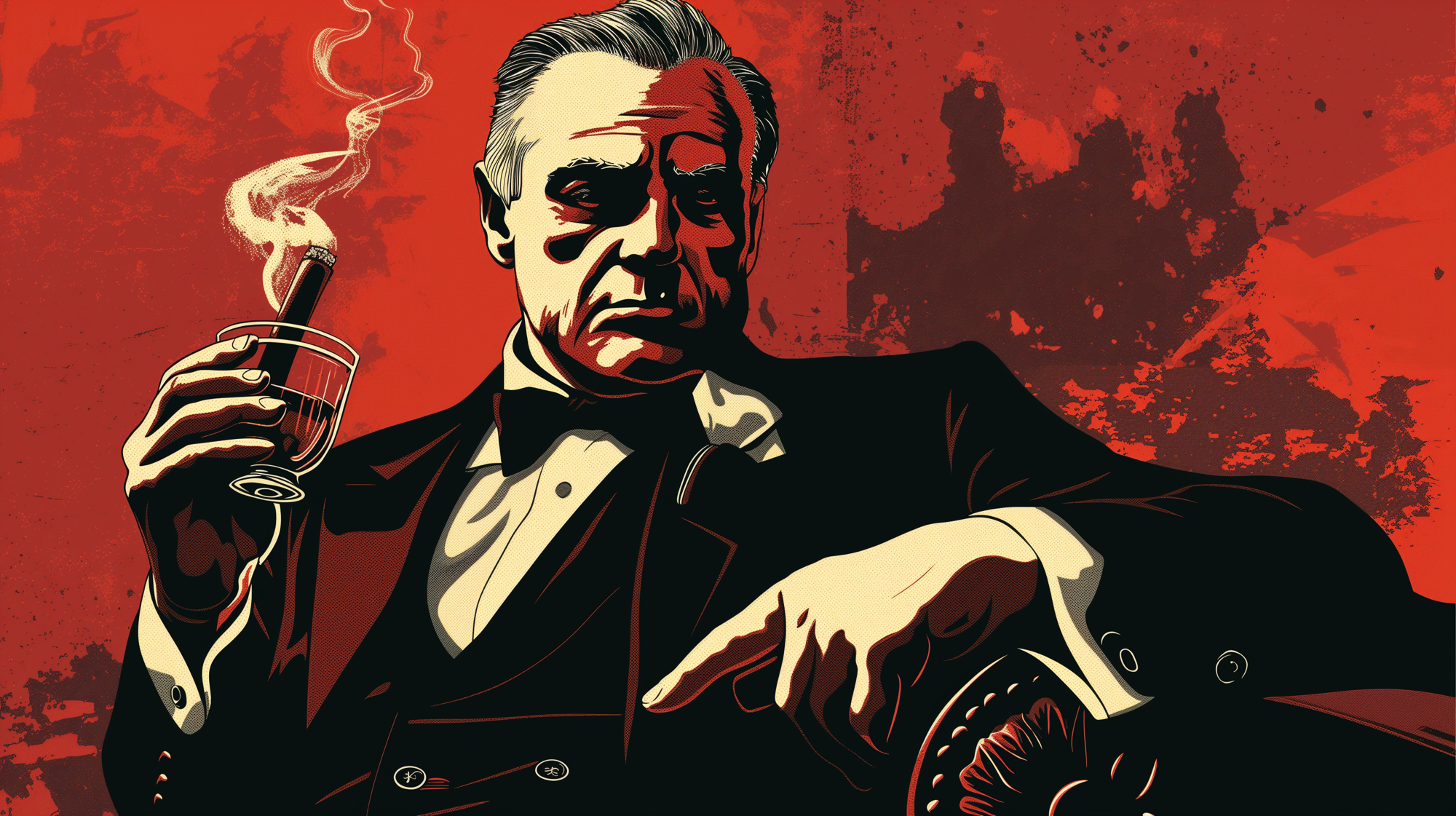The Mafia’s presence in Italy is not just a feature of the country’s criminal landscape but a complex phenomenon intertwined with its historical, social, and economic tapestry. This extensive presence has evolved over centuries, with roots deep in Italy’s cultural soil. Understanding why the Mafia has become such a significant entity in Italy involves exploring a range of factors, including historical origins, socio-economic influences, cultural practices, and the challenges that law enforcement faces in combating this entrenched organization. This article aims to provide a comprehensive exploration of these aspects, shedding light on the Mafia’s pervasive role in Italian society.
Historical Origins
The inception of the Mafia in Italy can be traced back to the 19th century, particularly in the island of Sicily, and later spreading to the mainland, notably in regions like Calabria and Campania. Initially, these organizations emerged as a response to the lack of effective governance, providing protection and order in rural areas where state presence was minimal. Over time, what began as a form of grassroots local governance evolved into complex criminal organizations, deeply embedded in the social and economic fabric of their respective regions. This historical evolution from protectors to powerful crime syndicates is crucial to understanding the Mafia’s enduring influence in Italy.
The Birth of the Sicilian Mafia
The roots of the Sicilian Mafia, known as Cosa Nostra, can be traced back to the early 1800s when Sicily was under foreign rule. The island’s social and political instability, combined with its agricultural economy, created a breeding ground for the Mafia. Local landowners relied on Mafia groups to manage their estates and protect their interests from bandits and rival landowners. This arrangement not only cemented the Mafia’s role as protectors but also allowed them to gain significant economic and social power.
Expansion to the Mainland
The migration of Mafia activities from Sicily to the Italian mainland occurred as Mafia families sought to expand their influence and operations. Regions like Calabria and Campania became new strongholds, with the ‘Ndrangheta and Camorra emerging as powerful criminal organizations. These groups adapted the Mafia model to local conditions, further entrenching the Mafia’s presence in Italy.
Economic and Social Factors
The stark economic disparities between the affluent North and the less developed South of Italy have provided fertile ground for the Mafia’s growth. In the South, where economic opportunities were limited and state institutions often weak, the Mafia filled the void, offering protection and economic opportunities, albeit through illicit means. They entrenched themselves in various sectors, from agriculture to construction, and later to more sophisticated enterprises like drug trafficking, becoming integral to both the underground and legitimate economies. This deep economic integration has made it challenging to disentangle the Mafia from the fabric of southern Italian society.
The Role of Unemployment
High unemployment rates in southern Italy have been a significant factor in the Mafia’s recruitment strategy. With few legitimate job opportunities available, many young people have turned to the Mafia as a means of economic survival. The Mafia offers employment in both legal and illegal enterprises, providing a level of financial security that is otherwise hard to achieve in these regions.
Agricultural Influence
The Mafia’s influence in agriculture is particularly notable. By controlling the distribution of water and supplies, they can dictate terms to farmers, ensuring their loyalty and compliance. This control extends to the markets, where the Mafia sets prices and decides which products reach consumers, effectively creating a parallel economy.
Political Connections and Corruption
One of the key factors in the Mafia’s rise to power has been its ability to infiltrate political and institutional structures. Through a combination of bribery, intimidation, and alliances, Mafia groups have exerted considerable influence over political decisions, law enforcement practices, and economic activities. This infiltration has not only enabled them to conduct their activities with relative impunity but also to shape policies and environments to their advantage, creating a cycle of corruption and influence that is challenging to break.
The Strategy of Infiltration
The Mafia’s strategy involves placing members or allies in key political positions. This ensures that they have advance notice of law enforcement activities and can influence legislative processes to benefit their interests. By aligning themselves with certain political factions, Mafia groups can ensure that their operations are protected and even facilitated by the state.
The Cost of Corruption
Corruption has significant economic and social costs. It distorts markets, undermines public trust, and diverts resources from essential services. For Italy, corruption linked to the Mafia has hindered economic development, particularly in the South, where it exacerbates existing inequalities and perpetuates the Mafia’s power.
Cultural Influence and Omertà
At the heart of the Mafia’s control over Italian society is the code of omertà, a code of silence that emphasizes loyalty and prohibits cooperation with authorities. This cultural norm is deeply ingrained in certain Italian communities, reinforcing the Mafia’s grip by discouraging the reporting of criminal activities and fostering an environment where the Mafia can operate with minimal external interference. The role of omertà extends beyond mere silence, influencing societal attitudes toward authority and justice, and contributing to the challenges of eradicating Mafia influence.
The Code of Silence
Omertà is more than just a refusal to speak; it’s a cultural expectation that shapes community behavior. Breaking omertà is seen as a betrayal not only to the Mafia but to one’s community and family. This cultural pressure ensures that even those who wish to oppose the Mafia find it difficult to do so publicly.
Impact on Law Enforcement
The pervasive nature of omertà presents significant challenges for law enforcement. Investigations are often hampered by a lack of witnesses willing to testify, making it difficult to build cases against Mafia members. This lack of cooperation extends to jurors and even police officers, some of whom may be reluctant to act against the Mafia for fear of reprisal.
Efforts to Combat the Mafia
Despite the deep-rooted presence of the Mafia, Italy has made significant strides in its efforts to combat these criminal organizations. The assassinations of judges Giovanni Falcone and Paolo Borsellino in the early 1990s marked a turning point, galvanizing public and governmental resolve to take a stronger stance against the Mafia. Enhanced legal frameworks, specialized anti-Mafia police units, and collaborative international efforts have led to notable successes, including high-profile arrests and seizures. However, the battle is ongoing, with the Mafia continually adapting its strategies and operations in response to these enforcement pressures.
Legal Reforms and Anti-Mafia Legislation
Italy has implemented a series of legal reforms aimed at disrupting Mafia operations. Laws such as the Rognoni-La Torre Law allow for the confiscation of assets from individuals associated with Mafia activities. These reforms have been crucial in weakening the economic power of Mafia families by hitting them where it hurts most—in their wallets.
International Cooperation
Given the global nature of many Mafia activities, international cooperation is essential. Italy works closely with organizations like Interpol and Europol to track and apprehend Mafia members operating abroad. Joint operations have led to the arrest of high-profile figures and the dismantling of international drug trafficking networks.
Current Challenges and Future Perspectives
Today, the fight against the Mafia is an ongoing struggle, reflecting the organization’s ability to evolve and adapt to changing social, economic, and political landscapes. Efforts to dismantle Mafia networks and diminish their influence require a multifaceted approach that includes robust law enforcement, judicial reform, economic development, and educational initiatives. Addressing the root causes of the Mafia’s power, particularly in economically disadvantaged regions, is seen as key to reducing their influence over the long term. The path forward involves not only continued vigilance and enforcement but also fostering social and economic conditions that diminish the Mafia’s appeal and power base.
Economic Development Initiatives
Promoting economic development in southern Italy is crucial to reducing the Mafia’s influence. Initiatives that focus on creating jobs, improving infrastructure, and supporting local businesses can help provide legitimate alternatives to Mafia involvement. Programs that encourage entrepreneurship and innovation are particularly valuable, offering young people a stake in the legal economy.
Educational and Social Programs
Education plays a vital role in combating the cultural norms that support the Mafia. Schools and community programs that teach young people about the law, civic responsibility, and the importance of rejecting organized crime can change attitudes over time. Encouraging a culture of cooperation with law enforcement and fostering a sense of community resilience are essential components of these educational efforts.
The Mafia’s enduring presence in Italy is a testament to its adaptability and the complex interplay of factors that sustain its influence. Understanding the historical, socio-economic, and cultural underpinnings of the Mafia is essential for developing effective strategies to combat its presence. While the challenges are significant, the resilience of the Italian state and society, combined with a comprehensive and sustained approach to tackling this issue, offers hope for reducing the Mafia’s role in Italy’s future. Through continued efforts in law enforcement, education, and economic development, Italy can work towards a future where the Mafia’s grip on society is significantly weakened.




